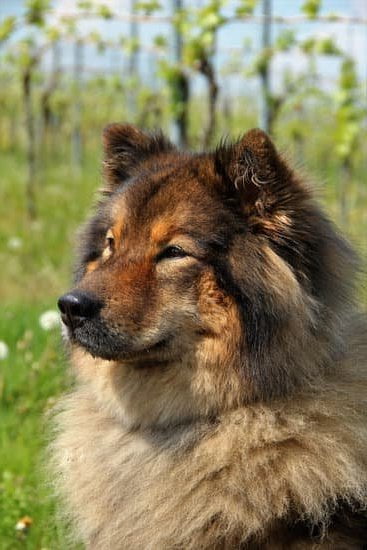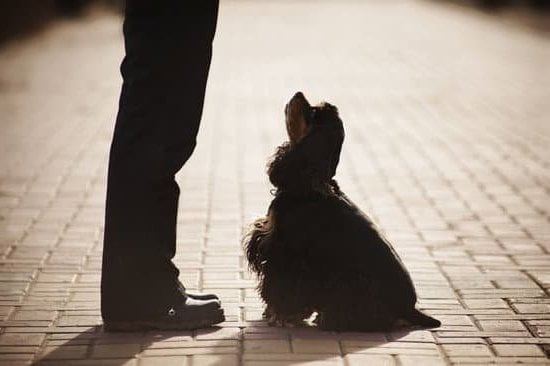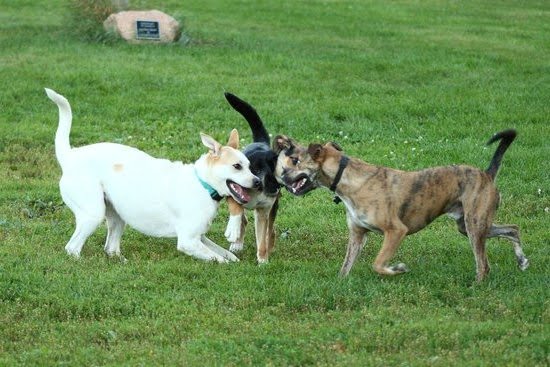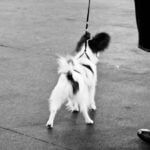Training your dog to interact with other dogs can be a rewarding experience, but it requires understanding canine communication and behavior. Dogs use a variety of signals to communicate with each other, and as pet owners, it’s essential to decipher these cues to ensure positive interactions. By learning how dogs communicate, you can better assess your dog’s behavior and address any potential issues or triggers that may affect their ability to socialize with other dogs.
One effective way to train your dog for social interactions is through positive reinforcement training. This method involves using rewards and praise to encourage desirable behaviors, such as friendly greetings and appropriate play. By reinforcing good behavior, you can help your dog build confidence and develop positive relationships with other dogs. Additionally, controlled introductions are crucial in ensuring that your dog feels safe and comfortable when meeting new canine friends.
In addition to training techniques, socialization activities play a significant role in helping your dog feel at ease around other dogs. Engaging in fun activities like group walks or playdates can provide opportunities for your pet to build social skills and confidence.
It’s also important for pet owners to learn how to read their dog’s body language and understand the signals that indicate whether an interaction is positive or potentially volatile. By following these steps and practicing in real-life situations, you can help your furry friend become a well-adjusted and sociable companion.
Assessing Your Dog’s Behavior
Before embarking on the journey of training your dog to interact with other dogs, it is crucial to assess your pet’s behavior and identify any potential issues or triggers that may affect their ability to socialize. Some dogs may have had negative experiences in the past, leading to fear or aggression towards other dogs. By understanding your dog’s behavior and triggers, you can tailor your training approach to address these issues effectively.
One way to assess your dog’s behavior is by observing their reactions in different situations. Take note of how they respond when encountering other dogs, whether it be excitement, fear, aggression, or avoidance. Understanding their body language and vocalizations can provide valuable insights into their emotions and comfort level around other dogs. Additionally, consider any past experiences or incidents that may have influenced your dog’s behavior towards other dogs.
To successfully train your dog to interact with other dogs, it is essential to gradually desensitize them to triggers that may cause negative reactions. This process involves exposing your dog to controlled situations where they can build positive associations with other dogs.
Using positive reinforcement techniques such as treats, praise, and toys can help encourage desirable behaviors and create a safe environment for interaction. Seek guidance from a professional trainer if you encounter challenges or need additional support in addressing behavior issues during the training process.
| Understanding Canine Communication | Exploring the Signals Dogs Use to Communicate With One Another |
|---|---|
| Assessing Your Dog’s Behavior | Identifying any potential issues or triggers that may affect your dog’s ability to interact with other dogs |
| Positive Reinforcement Training | Using rewards and praise to encourage positive interactions with other dogs |
Positive Reinforcement Training
When using positive reinforcement training to teach your dog how to interact with other dogs, it is important to be consistent and patient. Start by rewarding your dog for small steps towards positive interaction, such as approaching another dog calmly or showing interest without displaying aggressive behavior. As your dog begins to make progress, gradually increase the level of interaction and continue to reward good behavior.
In addition to rewards and praise, positive reinforcement training also involves setting clear expectations and boundaries for your dog’s behavior. By establishing rules and consistently enforcing them during interactions with other dogs, you can help your canine companion understand what is expected of them. With time, patience, and the right approach, you can effectively train your dog to interact positively with other dogs using positive reinforcement techniques.
| Positive Interaction Tips | Rewarding Good Behavior |
|---|---|
| Set up playdates with well-behaved dogs | Offer treats or toys when your dog shows curiosity towards another dog |
| Monitor body language for signs of stress or discomfort | Praise your dog when they display friendly behaviors |
| Use a calm and encouraging tone of voice during interactions | Consistently reinforce positive interactions with rewards |
Controlled Introduction
Introducing your dog to new canine friends can be an exciting but sometimes nerve-wracking experience. To ensure a smooth and positive interaction, it is essential to follow a step-by-step guide on how to introduce your dog to new dogs in a controlled and safe environment. Here are some tips on how to facilitate this process:
- Choose the Right Location: Select a neutral territory where neither dog feels territorial. This could be a local park or a friend’s backyard.
- Keep Both Dogs on Leash: It’s crucial to have both dogs on leash during the initial introduction to maintain control over the situation and prevent any potential conflicts.
- Observe Body Language: Pay close attention to both dogs’ body language. Signs of aggression or discomfort such as growling, raised hackles, or avoidance should be addressed immediately by calmly separating the dogs.
Positive Reinforcement: Use treats and praise to reward calm and friendly behaviors from both dogs during the introduction process. This will help create positive associations between meeting new dogs and receiving rewards.
- Allow Interaction: Once both dogs have shown positive body language and behaviors, you can allow them to interact under supervision. Keep a close eye on their interactions and intervene if necessary.
- Monitor Progress: Take note of how your dog interacts with the new dog. If there are any signs of tension or aggression, it may be best to separate them and try again at a later time.
By following these steps, you can help your dog feel more comfortable and confident when meeting new canine friends. Remember that each dog is different, so patience and consistency are key when training your dog to interact with other dogs.
Socialization Activities
Socialization is a crucial aspect of a dog’s development, as it helps them build confidence and social skills that are essential for interacting with other dogs. Engaging in fun socialization activities can make the process enjoyable for both you and your furry friend. Here are some activities you can try with your dog to help them become more comfortable around other dogs:
- Doggy Playdates: Organize playdates with friends or family members who have well-behaved dogs. This will give your pup the opportunity to interact and play with other dogs in a familiar and safe environment.
- Group Obedience Classes: Enroll your dog in group obedience classes where they can learn basic commands while being around other dogs. This structured setting will help them get used to the presence of unfamiliar dogs.
- Dog Parks Visits: Take your dog to a nearby dog park where they can observe and interact with a variety of dogs. Make sure to keep an eye on them and intervene if necessary to prevent any negative interactions.
These activities not only provide opportunities for your dog to socialize but also help them learn proper behaviors when interacting with other dogs. Remember to always supervise these interactions and be prepared to step in if any conflicts arise.
By engaging in these socialization activities regularly, you will help your dog develop the necessary social skills to interact positively with other dogs. Patience, consistency, and positive reinforcement are key in this training process. With time and practice, you will see improvements in your dog’s ability to communicate effectively with their canine companions.
Reading Body Language
Understanding Your Dog’s Body Language
To effectively train your dog to interact with other dogs, it is essential to first understand your own dog’s body language. Dogs communicate through various signals such as wagging tails, raised hackles, ears back or forward, and even subtle facial expressions.
By understanding these cues, you can better anticipate how your dog may react in different situations and environments. For example, if you notice your dog’s tail is tucked between its legs and ears are flattened back, it may indicate fear or discomfort.
Interpreting Other Dogs’ Body Language
In addition to understanding your own dog’s body language, it is equally important to be able to interpret the body language of other dogs during interactions. This can help prevent potential conflicts or misunderstandings between dogs. Signs of aggression in another dog may include a stiff stance, raised fur along the back, and direct eye contact. On the other hand, signs of friendliness may include loose body movements, a relaxed face, and play bowing.
Tips for Safe Interactions
When introducing your dog to new canine friends, always closely monitor both dogs’ body language for any signs of tension or stress. Keep interactions short initially and gradually increase the duration as both dogs become more comfortable with each other. Reward positive interactions with treats and praise to reinforce good behavior.
If either dog shows signs of discomfort or aggression, calmly separate them and try again at a later time. With patience and practice, you can help your dog develop positive social skills and enjoy interacting with other dogs.
Behavior Correction
Identifying Negative Behaviors
When training your dog to interact with other dogs, it is important to recognize any negative behaviors or reactions they may exhibit. Some common behaviors include fearfulness, aggression, excessive barking, or growling. These behaviors can be a result of past experiences, lack of socialization, or even genetics. By identifying these negative behaviors early on, you can work on addressing them effectively.
Positive Reinforcement Training
One of the most effective ways to address negative behaviors in dogs is through positive reinforcement training. Instead of punishing your dog for exhibiting unwanted behaviors, focus on rewarding them for displaying the desired behavior. For example, if your dog tends to bark excessively when around other dogs, reward them with treats and praise when they stay calm and quiet during interactions. This will help reinforce positive behavior while gradually reducing the negative ones.
Seeking Professional Help
If your dog continues to exhibit problematic behaviors when interacting with other dogs despite your best efforts, it may be beneficial to seek professional help from a certified dog trainer or behaviorist. They can provide expert guidance on how to train your dog to interact with other dogs in a safe and controlled manner.
A professional can also help you create a customized training plan that suits your dog’s specific needs and temperament. Remember that every dog is unique, and what works for one may not work for another.
Practicing in Real-Life Situations
In conclusion, training your dog to interact with other dogs is a process that requires patience, consistency, and understanding of canine behavior. By following the steps outlined in this guide, pet owners can help their furry companions develop positive social skills and build confidence when engaging with other dogs.
One key aspect emphasized throughout this training process is the importance of positive reinforcement. Rewarding good behavior and using praise to reinforce desirable interactions will go a long way in encouraging your dog to engage positively with other dogs. By creating a safe and controlled environment for introductions, pet owners can set their dogs up for success and minimize any potential triggers or negative reactions.
As pet owners continue to practice in real-life situations and gradually expose their dogs to different environments and scenarios, they are ensuring that their beloved companions are well-prepared to interact with a variety of dogs confidently. By reading body language cues, addressing any negative behaviors promptly, and engaging in socialization activities regularly, pet owners can foster healthy relationships between their dogs and other canine friends.
Ultimately, with dedication and care, training your dog to interact with other dogs can be a rewarding experience for both you and your furry companion.
Frequently Asked Questions
How Do I Train My Dog to Get Along With Other Dogs?
Training your dog to get along with other dogs involves gradual exposure in controlled environments, positive reinforcement, and consistent training. Start by introducing them to calm, friendly dogs and rewarding good behavior.
How Do I Stop My Dog From Being Aggressive Towards Other Dogs?
If your dog is showing aggression towards other dogs, it’s essential to address the underlying causes, such as fear or insecurity. Consult a professional trainer or behaviorist to develop a tailored desensitization and counterconditioning plan.
Is It Ever Too Late to Socialize a Dog?
It’s never too late to socialize a dog, but it may require more time and patience. Older dogs can still benefit from socialization through positive experiences with other dogs and gradual exposure to new environments. Be patient and consistent in your approach.

Welcome to the blog! I am a professional dog trainer and have been working with dogs for many years. In this blog, I will be discussing various topics related to dog training, including tips, tricks, and advice. I hope you find this information helpful and informative. Thanks for reading!





